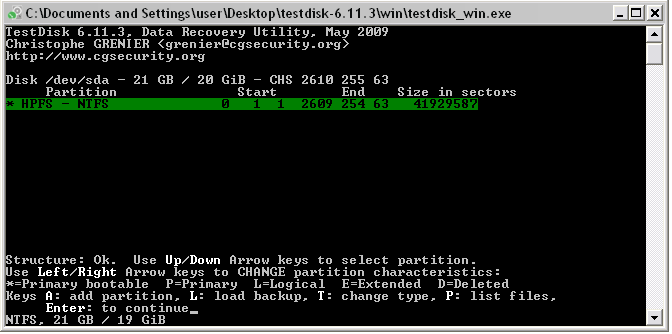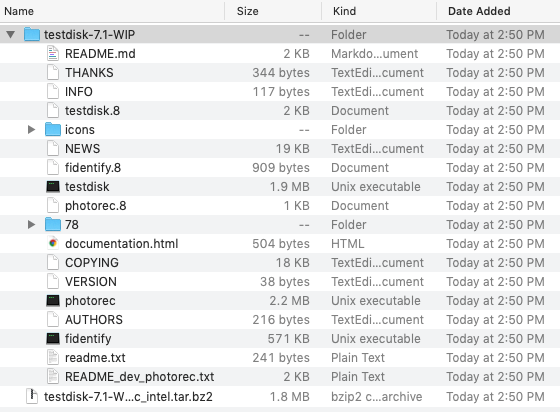
Hopefully the disk size and/or order in the list provides you enough information to select the correct disk.

You need to select the disk that contains the deleted files you wish to recover.dev/ rdisk disks give “raw” disk access to the same disks listed just above, but are generally faster to use so it’s recommended to use the rdisk access point to your disk. dev/disk0, /dev/disk1, /dev/disk2, plus 3 similar with “r”disk. Below you see 6 disk partitions (just my particular case as I had 2 external disks connected).After launching the photorec program you’ll see the home screen of this free Mac undelete program:.Enter your password and hit return/Enter to proceed to the home screen. Then photorec will restart itself using sudo. Without using sudo photorec may return an error of “No disk found”. In my case, I could not see the partition where my accidentally deleted files were stored as I didn’t use sudo and I nearly gave-up and paid the extortion fees for a paid undelete program. In some cases this won’t be necessary, but it doesn’t hurt and will ensure you see all of your disk partitions where your deleted files may be stored. It is key that you use sudo to run the photorec program which will undelete / recover deleted files from your Mac drives. You often need “root” access for photorec to see all partitions on your disk and using “sudo” gives you the power of root access.At this point you’ll be asked for your password. To start the undelete mac files program, type “ sudo.Each red arrow in image below points to a typed command followed by enter/return button. Show the contents of the directory by typing “ ls” then press enter/return. Change directory to testdisk-7.0-WIP by typing “ cd testdisk-7.0-WIP” then press enter/return. (Capital/Uppercase letters matters in most cases. Change directory to Downloads by typing “ cd Downloads” then press enter/return button.Launch the Terminal program, found in Applications -> Utilities -> Terminal.You’ll then see a folder named testdisk-7.0-WIP You can see it in Finder like in the below image.The file will be saved in your Downloads folder named _2.



To undelete Mac files free, here is a step-by-step guide to using a free Mac undelete program called Photorec by Christophe GRENIER of CG Security.


 0 kommentar(er)
0 kommentar(er)
